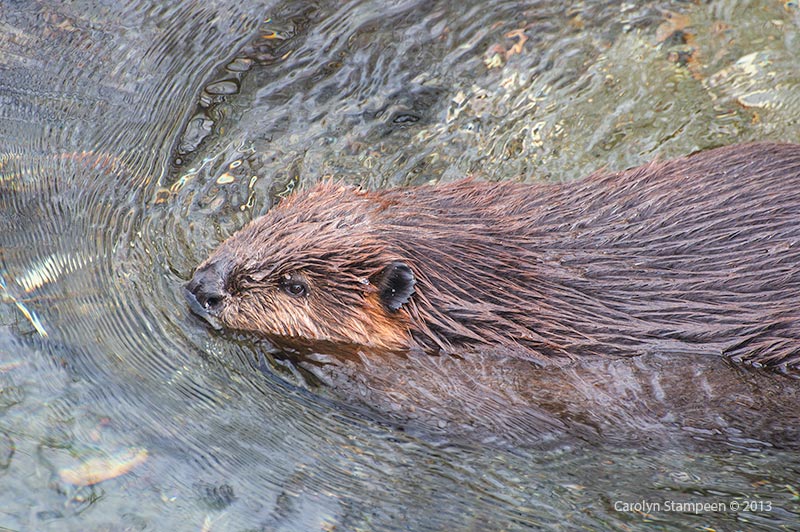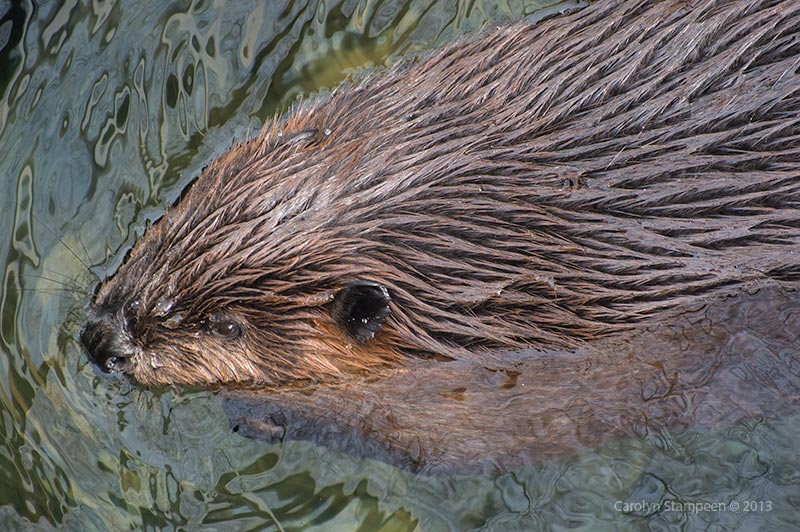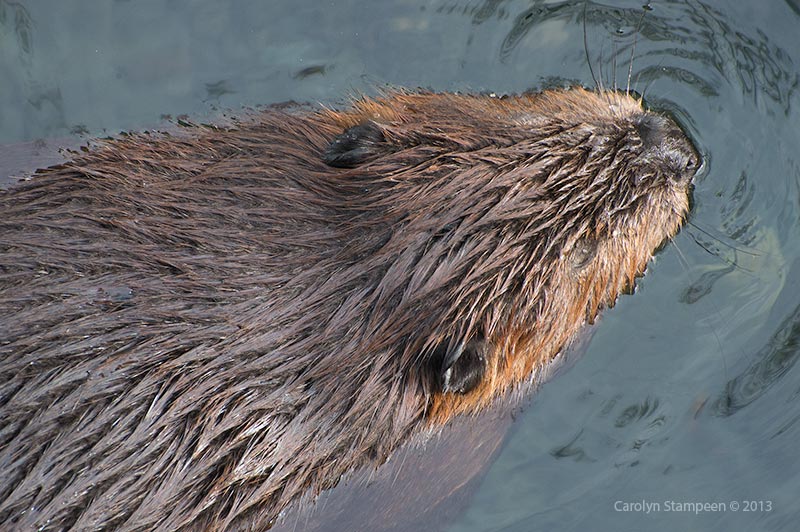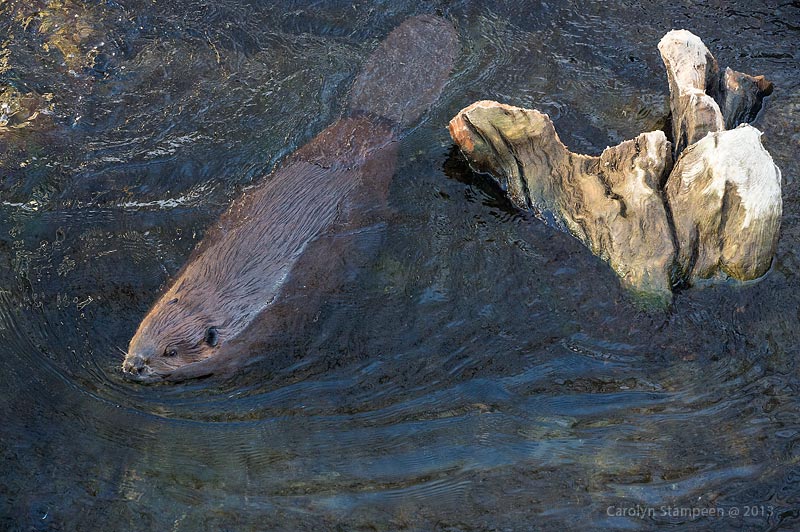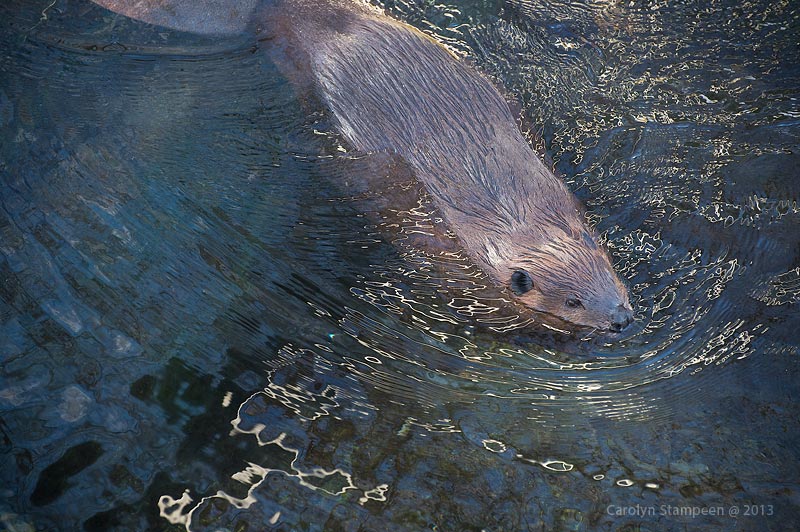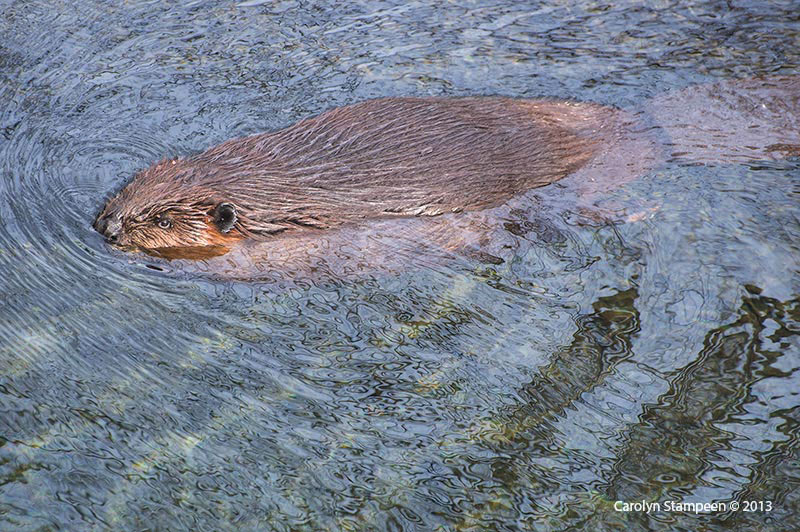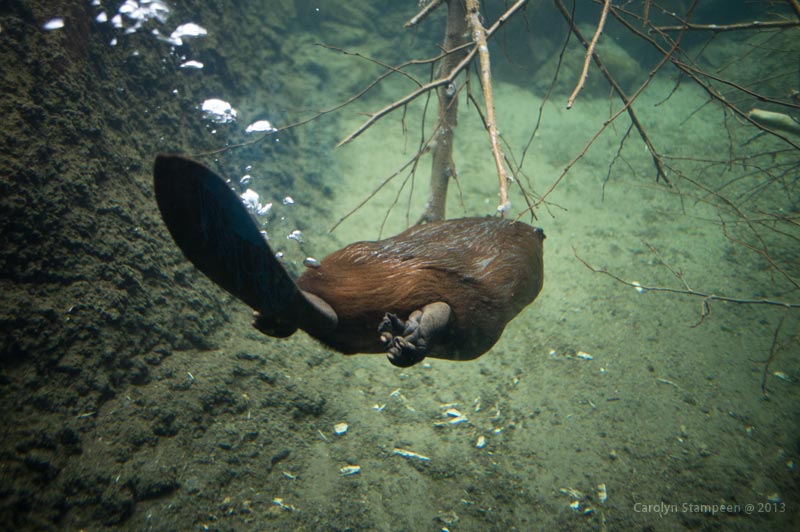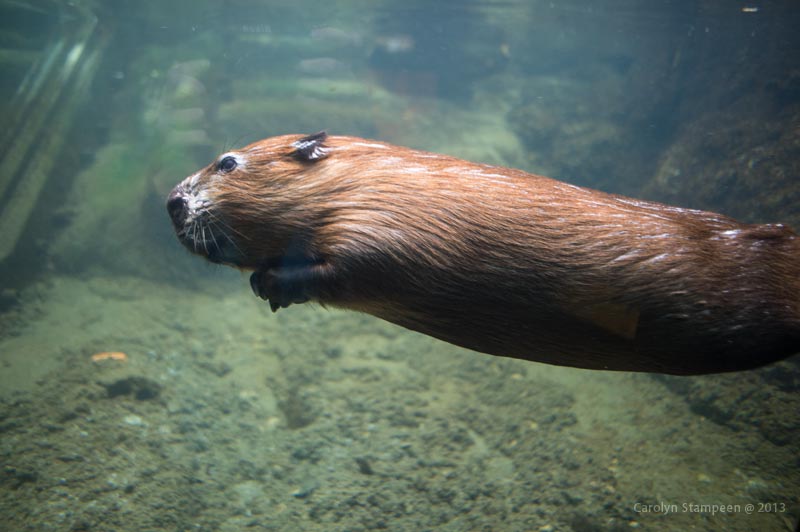While canoe camping once, I paddled by a beaver lodge and thought I heard some mewing sounds coming from inside. Though it looked rather decrepit on the outside, perhaps it was an active lodge. All was quiet as I pulled up next to it to investigate more closely, so I wasn’t certain if the noise I had heard had come from inside the lodge or from the woods just behind. Had the sound of the paddle and the water lapping up against the canoe as I approached alerted inhabitants into silence?
Beavers are most active at dawn and dusk. On that day, as dusk approached, the wind came up, making a stealthy approach a difficult affair. Before sunrise the next day, I threw my camera into the canoe, and while the fellow was still cozied up in the sleeping bag against the chill of the predawn air, I paddled towards the lodge. It was that magic time around sunrise when the wind hasn’t decided what to do yet, so the water was flat and there was only the slightest of breezes to affect the motion of a canoe. I rounded the bend, knew where the canoe had to go, took the whisper of the wind into account, pointed a path that would carry me beside the lodge, put up the paddle, pulled out my camera and froze with it on my face, ready to be able to react without moving and scaring any possible creatures.
The canoe silently glided along its planned path, approaching the beaver lodge. Then I saw it: a brown head swimming towards me! My heart started pounding. It was an active lodge! And…the beaver swan right beside my canoe. I could have reached out and petted its head. Only one thing got in the way of the magical experience. The cool morning air and the camera next to my face conspired to fog up my glasses. I needed to react or loose the moment, so I composed a shot using blurry shapes seen through the haze, hoped that my camera’s autofocus wouldn’t let me down and that I indeed had the camera focusing on the right point. The shutter clicked. In the early morning stillness that noise bounced crisply across the water, an alien sound among the songs of hermit thrushes and white-throated sparrows and the gentle lapping of water on the shoreline … and, as quickly as the camera shutter closed, the lake resounded with the sound of a shotgun cracking through the air. The beaver had reacted to “the log” making an unexpected and unfamiliar noise by slapping its tail hard onto the water’s surface before diving to safety, having warned all its kin to beware of a possible danger.
And that was it as far as seeing any further beavers that morning.
The fact that the zoo has local, “ordinary” animals in its care as well as those more exotic is a good thing, as most of us live in cities and are becoming more and more detached from nature. Our own country’s wildlife has, in fact, become exotic as far as the average person is concerned. Here I am afforded a chance to practice taking shots of creatures such as beaver, preparing for the next time when I am in the great outdoors and am able to see the critters in the wild, perhaps repairing a dam.
The fellow doesn’t seem impressed with the beaver shots. I, on the other hand, have difficulty pulling myself away from looking at them. I am fascinated with the details of how the fur forms when it’s wet, how water beads on it, the little ears, the iceberg effect it creates when it swims (we see a little of it above the surface, but most of its body is underneath the water’s surface). I also love the ripples, reflections and colours of the water as the animal swims.
The zoo also allows for shots like the two below, without the need for an underwater housing on our cameras — though we need to be aware of dirty spots on the glass that might cause blurry areas in our images, and we need to look out for reflections on the glass. It’s great to put the lens right up to the glass to help reduce possible reflections.
Photography tip here: Though the sun had peeked out for some of these shots, lending some interesting lighting, this scene is the inverse of the snow scenes for the most part. The black water in many of the shots and the reflective surface of the water when the sun came out are both two things to pay attention to. You have a digital camera — don’t be afraid to experiment. Take a shot, check the histogram. When it looks good — more to the right, without clipping the edge, note the exposure. For a scene such as this, I would then go into manual mode. Do make sure that your shutter speed is fast enough to capture motion, unless you are trying some creative blur images. Better the grain of a higher ISO than missing a shot.

